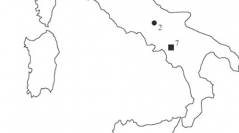

 Comptes Rendus Palevol
5 (1-2) - Pages 73-83
Comptes Rendus Palevol
5 (1-2) - Pages 73-83Pollen analyses from archaeological deposits or from framing prehistoric occupation layers are a contribution to the knowledge of the flora, environment and climate conditions synchronous of occupations of a territory by Hominids. Palynological results are compared with glacial and interglacial episodes from long pollen sequences. Palaeoenvironmental and palaeoclimatic data are interpreted and placed within the Quaternary and Prehistory chronological framework. The Ca’ Belvedere di Monte Poggiolo and La Pineta open-air sites (Italy) and the Vallonnet cave (South-East of France) show evidences for an early colonization of the European Mediterranean basin during the Early Pleistocene. Pollen analyses undertaken in those prehistoric sites have provided new data on the Hominid and their surrounding landscapes. These data are faced with some Early Pleistocene climatic cycles recorded in long and continuous pollen sequences.
Palynology, palaeoenvironment, palaeoclimatology, Early Pleistocene, Middle Pleistocene, Prehistory, French Mediterranean area, Italy